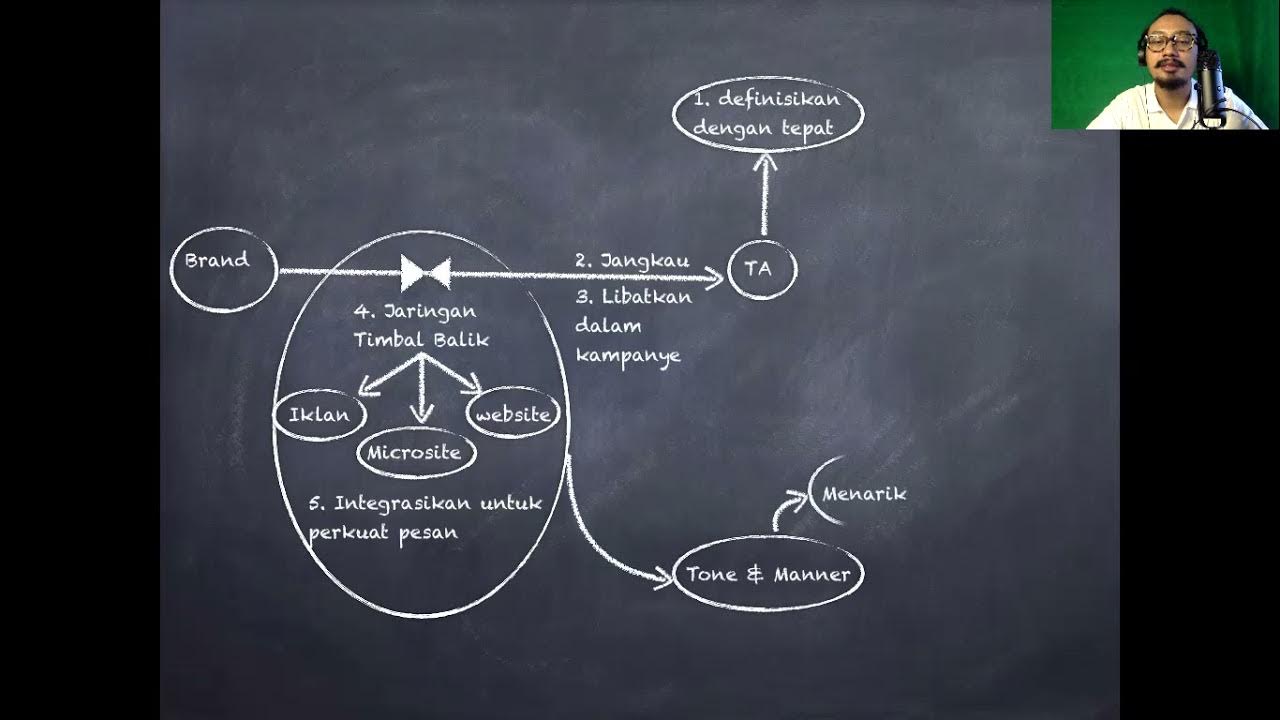Engagement Marketing Untuk Loyalitas Pelanggan - ANALISIS #39
Summary
TLDRThis video discusses the significance of engagement marketing in fostering customer loyalty in the digital age. It highlights three critical reasons for prioritizing engagement: the challenge of information overload with a limited attention span, the shifting expectations of younger consumers who seek experiences and continuous interaction, and the high levels of digital engagement among Indonesian youth. The speaker introduces effective engagement strategies, including leveraging mobile applications for content and services, utilizing social CRM for two-way communication, and incorporating gamification in loyalty programs. By adopting these techniques, brands can build stronger relationships with their customers.
Takeaways
- 😀 Engagement marketing is crucial for building customer loyalty in the digital age.
- 😀 Consumers are overwhelmed by about 2.5 quintillion bytes of content daily, yet their attention span is only around eight seconds.
- 😀 Different generations have varying expectations, with Millennials and Gen Z valuing exciting experiences and continuous engagement over established brands.
- 😀 A significant number of Indonesians check their phones within one minute of waking and spend over eight hours online daily, highlighting the need for effective engagement.
- 😀 Mobile applications are a key tool for delivering content, providing customer service, and enhancing user experiences.
- 😀 Popular mobile app features include social, local, and mobile functionalities (SoLoMo) for real-time engagement based on user location.
- 😀 Social CRM differs from traditional CRM by focusing on inbound communication and customer insights rather than just company-driven outreach.
- 😀 Social media allows for two-way conversations, enabling brands to listen and engage directly with consumers.
- 😀 Gamification is an effective strategy in loyalty programs, using point systems and tiered rewards to motivate customer behavior.
- 😀 Examples of successful gamification include Starbucks' rewards program and Go-Jek's tiered membership structure, which incentivize customer engagement.
Q & A
What is engagement marketing?
-Engagement marketing refers to strategies and techniques aimed at creating a two-way interaction between brands and customers, fostering loyalty and deeper relationships in the digital age.
Why is attention span significant in the context of engagement marketing?
-Attention span is critical because, despite the massive amount of content available to consumers (2.5 quintillion bytes daily), the average attention span is only about eight seconds. This makes it challenging for brands to capture and maintain consumer interest.
How have generational expectations shifted in terms of brand interaction?
-Younger generations, such as Millennials and Gen Z, prioritize experiences over brand credibility. They seek continuous engagement rather than one-time interactions, prompting brands to focus on enhancing customer experiences.
What statistics highlight the engagement of Indonesian youth with mobile phones?
-In Indonesia, 8 out of 10 people check their phones within one minute of waking up, and they spend an average of over eight hours daily on the internet, demonstrating high levels of mobile engagement.
What are the three techniques for effective engagement marketing discussed in the video?
-The three techniques are: 1) Developing mobile applications for content delivery and customer service; 2) Utilizing social CRM to facilitate two-way communication with customers; 3) Implementing gamification strategies to encourage customer loyalty.
How can mobile applications enhance customer engagement?
-Mobile applications can enhance engagement by delivering content, serving as self-service channels, and providing interactive customer experiences with features that are location-based and accessible on-the-go.
What is the difference between traditional CRM and social CRM?
-Traditional CRM is company-driven and often one-way, focusing on contacting customers based on a database. In contrast, social CRM is customer-driven, emphasizing insights from customers and facilitating many-to-many conversations on social media.
How can companies use social media for customer feedback?
-Companies can monitor social media conversations to gather customer feedback, engage with customers in discussions, and address complaints effectively through dedicated social media accounts.
What are the key components of gamification in loyalty programs?
-Key components of gamification include a point system for collecting rewards, tier levels (like Bronze, Silver, Gold), behavioral calls to action to encourage customer activity, and incentives for achieving higher status within the program.
Can you provide examples of gamification in practice?
-Examples of gamification include Starbucks Rewards, where customers earn points for purchases, and Gojek's Go Club, which offers tiered privileges based on accumulated points and engagement.
Outlines

This section is available to paid users only. Please upgrade to access this part.
Upgrade NowMindmap

This section is available to paid users only. Please upgrade to access this part.
Upgrade NowKeywords

This section is available to paid users only. Please upgrade to access this part.
Upgrade NowHighlights

This section is available to paid users only. Please upgrade to access this part.
Upgrade NowTranscripts

This section is available to paid users only. Please upgrade to access this part.
Upgrade NowBrowse More Related Video

The Future of Marketing is Immersive - ANALISIS #54

What is Marketing? | Marketing Mix (4 Ps of marketing) | Types of Marketing

Penerapan Customer Relationship Management di Perusahaan

Materi Ke 13 Pengantar Bisnis Prodi Ilmu Komputer FBI

Public Relations vs Marketing vs Advertising: What's the difference?

Digital CRM
5.0 / 5 (0 votes)